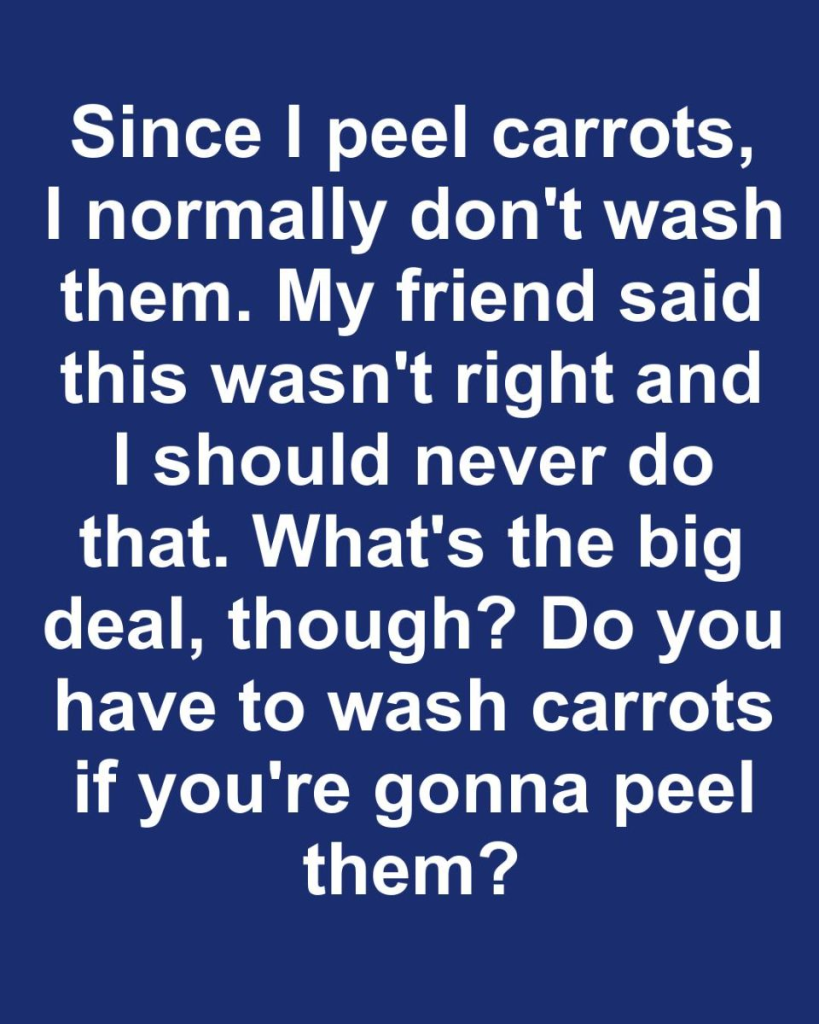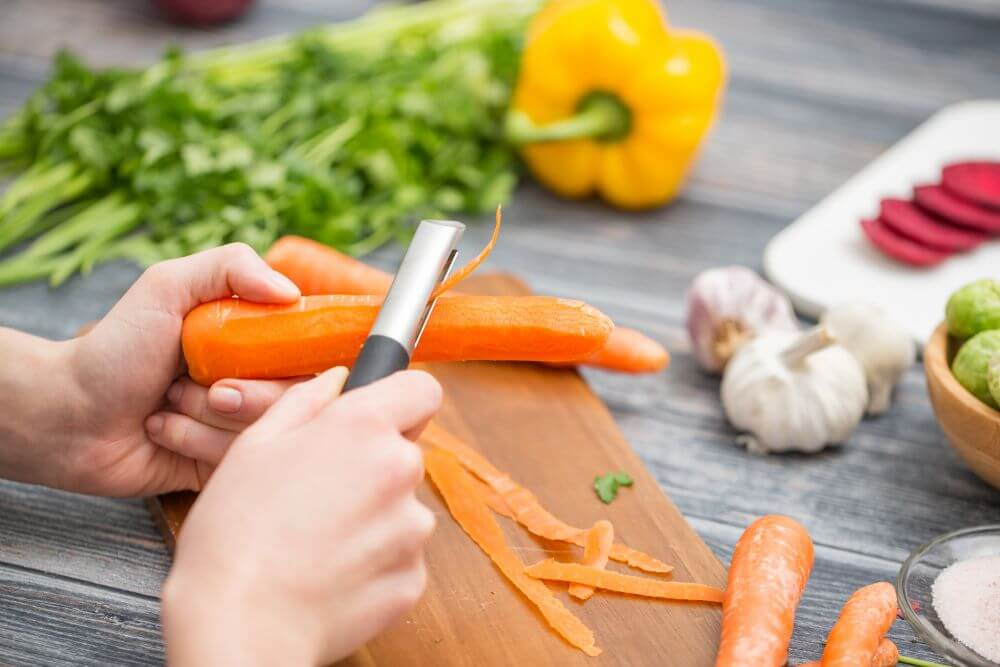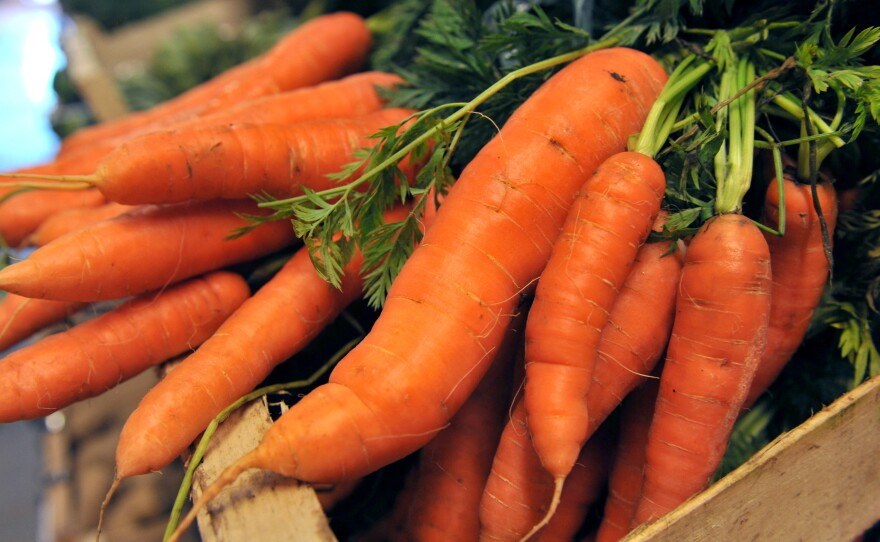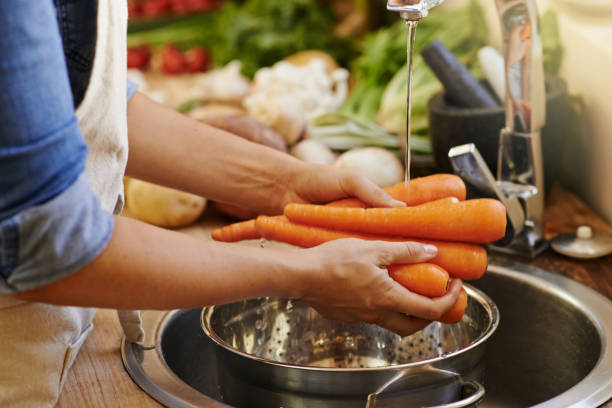Let’s be honest—we’ve all done it. You’re prepping dinner, peeling a bunch of carrots, and skipping the sink rinse because, well, you’re removing the skin anyway… right? That’s exactly what I used to think too—until my friend gave me the look and said, “You should always wash them first!” But why? What’s the big deal if we’re peeling them anyway?
Spoiler alert: It is a big deal. And it’s not just about a little dirt. Let’s peel back the truth and find out what really goes on with carrots—and whether washing is as optional as some people think.

Peeling Carrots Isn’t a Magic Clean-Up Trick
Most of us peel carrots because the outer layer can be a little rough or bitter. It looks better on the plate too, giving you that clean, bright-orange veggie that screams “fresh.” But here’s the catch: peeling doesn’t magically erase everything that’s been clinging to the carrot since it was pulled out of the ground.
Dirt, bacteria, even pesticide residue can hang on tightly. And when you start peeling, those nasties can transfer right from the outer skin to the clean part of the carrot through your hands, your peeler, or the cutting board. Yep—it’s like tracking mud into your clean kitchen with dirty shoes.
Video: Do You Have to Peel Carrots?
Dirt, Bacteria, and the Hidden Risks
Carrots are root vegetables, which means they grow underground. That soil? It’s not just dirt—it can contain harmful bacteria like E. coli or Salmonella. Sure, peeling might get rid of the outer layer, but unless you wash first, you’re risking cross-contamination.
Imagine peeling a dirty carrot without rinsing. Your peeler picks up grime from the unwashed skin and drags it across the part you plan to eat. Doesn’t sound so appetizing now, does it?
Nutrients Are Closer to the Surface Than You Think
Here’s something you might not know: some of the best stuff in a carrot is right near the skin. We’re talking fiber, antioxidants, and beta-carotene—that powerhouse nutrient your body turns into vitamin A. When you wash instead of peel (or at least wash before peeling), you’re giving yourself a better chance of keeping those nutrients intact.
Plus, if the carrots are fresh and the peel isn’t too tough, you might not need to peel at all. Washed properly, the peel is perfectly safe—and healthy—to eat.
Common Myths That Need to Go

Let’s bust a few carrot-cleaning myths:
- “Peeling makes washing pointless.” Nope. Peeling without washing just spreads dirt around.
- “Washing ruins flavor or texture.” Also false. A quick rinse won’t waterlog your carrots or make them soggy.
- “Store-bought carrots are already clean.” They might look clean, but appearances can be deceiving. Many are just surface-cleaned for shelf appeal.
Bottom line: washing adds a layer of safety that peeling alone can’t guarantee.
Pesticides Don’t Disappear Just Because You Peel

Conventional carrots are often treated with pesticides, and those residues can cling to the skin. While peeling removes some of it, washing can remove even more—up to 80%, according to some studies. And guess what? Even organic carrots can carry natural residues from compost, manure, or contaminated water.
Rinsing under cold running water and gently scrubbing with a vegetable brush helps knock off lingering chemicals, dirt, and germs. It’s a simple habit with a big payoff.
Store-Bought vs. Homegrown: Does It Make a Difference?
It might surprise you, but both store-bought and homegrown carrots need washing. Store-bought ones are often pre-cleaned but not sterilized. Homegrown carrots? They tend to come with clumps of dirt and haven’t gone through any commercial washing process. Either way, a good rinse is a must.
If you grow your own, you also know exactly what kind of soil and fertilizer you used—which is great—but that doesn’t mean they’re bacteria-free.
What Do the Experts Say?
Nutritionists and food safety pros all agree: rinse your fruits and veggies. The FDA recommends washing produce under running water, regardless of whether you peel it. It’s the most effective way to reduce your risk of foodborne illness.
Even if you’re peeling, washing beforehand prevents dirt and germs from hitching a ride to the edible part. It’s like washing your hands before cooking—you’re just setting the stage for safer food.
Should You Use Vinegar or Baking Soda?
Video: Avoid Doing This To Your Carrots! Dr. Mandell
You’ve probably seen hacks online using vinegar, lemon, or baking soda to wash vegetables. While those can help, they’re not required. For carrots, a thorough rinse under running water and a quick scrub with a clean vegetable brush is usually all it takes.
If you’re super cautious or just love DIY kitchen hacks, go ahead and soak them in a vinegar-water mix. Just remember to rinse afterward to avoid any leftover taste.
Worried About Water Waste? Here’s What You Can Do
If water conservation is on your mind (as it should be), try this: fill a bowl with cool water and wash several carrots at once. You can even reuse that water to hydrate your houseplants. It’s a win-win—clean carrots, less waste.
How to Wash Carrots the Right Way

Here’s a quick step-by-step for efficient carrot cleaning:
- Rinse under cold running water to loosen surface dirt.
- Use a veggie brush to gently scrub the skin.
- Pay attention to the ends and around the stem.
- Pat dry with a clean towel or let air dry.
That’s it. You’ve just given your carrots a proper bath.
Conclusion: Wash First, Peel Second, Eat Smart
So, do you have to wash carrots if you’re going to peel them? Technically no, but practically? Absolutely. Washing first ensures you’re not dragging bacteria or dirt across the edible parts. It keeps your kitchen cleaner, your meals safer, and your nutrients intact.
If you’re all about saving time, consider skipping the peel altogether and just giving those carrots a good scrub. Either way, washing should always come before peeling. It’s a tiny habit that makes a big difference.
And next time someone says, “Why wash if you’re just peeling?”—you’ll have the perfect answer.


